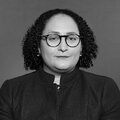The Supreme Court ruled Monday that states can require their appointed members of the Electoral College to vote for the popular-vote winner in the state. Had the Court ruled that so-called “faithless electors” had a constitutional right to vote for whomever they pleased, then the presidential election could have become bedlam if enough coordinated faithless electors conspired to change the outcome. Electors would have been able to change their votes for any reason — like if they believed false claims of voter fraud that President Trump and his allies have been pushing. Or they could have voted for someone who isn’t even on the ballot, from Bernie Sanders to Kanye West.
Fortunately, the justices unanimously ruled that electors who don’t vote the way the citizens of their state vote can be removed or punished. This means one of the following people will become president: presumptive nominees Republican Donald Trump, Democrat Joe Biden, the Green Party’s Howie Hawkins, or Libertarian Jo Jorgensen. And it closes the outside lane for a Kanye presidency.
There were two cases at the Supreme Court this term that raised the faithless elector problem: one out of Colorado and the other out of Washington State. In the Colorado case, a federal appeals court ruled in favor of the faithless electors. In the other, the Washington State Supreme Court ruled against them, and the U.S. Supreme Court took both cases to resolve the difference. Monday’s decision was in the Washington case, and it was written broadly enough to resolve both.
The Washington law at issue allowed the state to punish or remove faithless electors. Thirty-two states and the District of Columbia (including my home state of Florida) have such laws, which are now confirmed as constitutional.
This outcome is good for voters because it makes it easy for states to force electors to vote the way citizens voted. As Justice Elena Kagan writing for the Court concluded, “The Constitution’s text and the Nation’s history both support allowing a State to enforce an elector’s pledge to support his party’s nominee—and the state voters’ choice—for President.” This is also good for democracy.
Nevertheless, it’s not clear that this is what the framers of the Constitution intended, as the whole point of the Electoral College was to mitigate the power of the people to elect the president. The people’s votes are mediated through the Electoral College because the founders did not trust the people to vote for the best person for president. Thus, the sober-minded electors would do the ultimate choosing.
In Kagan’s reading of the Constitution, Article II’s “appointments power gives the States far-reaching authority over presidential electors… And the power to appoint an elector (in any manner) includes power to condition his appointment—that is, to say what the elector must do for the appointment to take effect.”
This is where she loses the support of Justices Clarence Thomas and Neil Gorsuch, who wrote in a concurring opinion that “[t]he Court’s conclusion that the text of Article II, §1, expressly grants States the power to impose substantive conditions or qualifications on electors is highly questionable.” But Thomas and Gorsuch decide that the states can place conditions on electors precisely because the Constitution is silent on the matter, and under the 10th Amendment any residual powers lie with the states.
The Court’s decision relies heavily on a 1952 case that had rejected “the argument that the Constitution ‘demands absolute freedom for the elector to vote his own choice.’” It also relies on American electoral history, in which nearly all members of the Electoral College have voted the way popular elections in their respective states voted.
The lawyers for the faithless electors had made much of the fact that over the past two centuries 180 electors cast “faithless” votes. But this argument was swept aside when the larger context of the history of the Electoral College was considered. As Kagan reminds us, “The Electors stress that since the founding, electors have cast some 180 faithless votes for either President or Vice President. But that is 180 out of over 23,000. And more than a third of the faithless votes come from 1872, when the Democratic Party’s nominee (Horace Greeley) died just after Election. Putting those aside, faithless votes represent just one-half of one percent of the total.” Thus, this tiny handful of faithless electors was not enough to convince the Court that states stood powerless to discipline faithless electors going forward.
Kagan makes some quips, like stating of early presidential elections that “One might think of this as fodder for a new season of Veep” or that “Alexander Hamilton secured his place on the Broadway stage—but possibly in the cemetery too” by supporting his rival Thomas Jefferson over Aaron Burr. But the decision is serious business and will govern how the 2020 election and all future presidential elections will run.
Kagan ends her opinion writing that when a “State instructs its electors that they have no ground for reversing the vote of millions of its citizens[,] [t]hat direction accords with the Constitution—as well as with the trust of a Nation that here, We the People rule.” Indeed, this is a strongly pro-voter decision.
The views expressed are the author’s own and not necessarily those of the Brennan Center.




